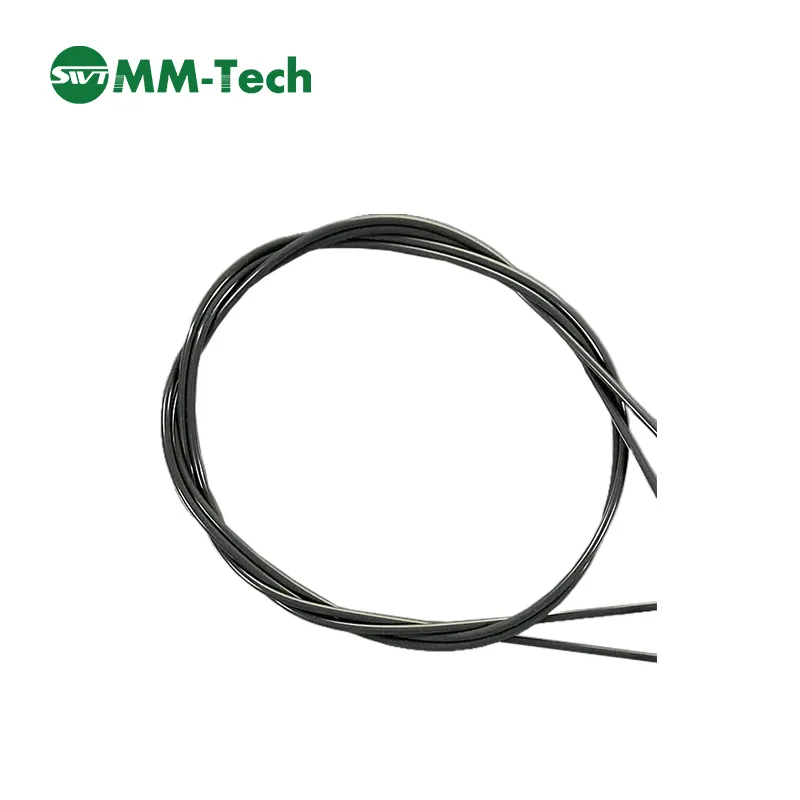
Polyvinyl chloride (PVC) has long been a cornerstone of modern manufacturing, offering unparalleled versatility and chemical resistance. As one of the most widely used plastics globally, PVC’s applications span from construction materials to medical devices. However, the true potential of PVC is unlocked through advanced joining techniques like PVC welding rods, which enable seamless integration of PVC components. This article explores the technical specifications, advantages, and real-world applications of PVC welding rods, with a focus on HEBEI MINGMAI TECHNOLOGY CO., LTD., a leading innovator in this field.
Understanding PVC: The Foundation of Modern Plastic Technology
First synthesized in 1872, PVC has evolved into two primary forms: rigid unplasticized PVC (uPVC) and flexible PVC. The latter’s malleability makes it ideal for applications requiring elasticity, while uPVC’s rigidity suits structural components. The chemical inertness of PVC allows it to withstand harsh environments, making it a preferred material for piping, window frames, and electrical insulation. However, achieving durable joints in PVC requires specialized tools, which is where PVC welding rods play a critical role.
The Science Behind PVC Welding Rods
PVC welding rods are designed to melt and fuse PVC materials through heat application, creating strong, seamless bonds. These rods are typically composed of the same PVC polymer as the base material, ensuring compatibility and minimizing thermal stress. The process involves heating the rod to its melting point and then applying it to the joint, where it solidifies to form a cohesive bond. This method is particularly effective for HEBEI MINGMAI TECHNOLOGY CO., LTD.‘s products, which are engineered for precision and reliability.
Key Technical Specifications
| Parameter | Details |
|---|---|
| Material | High-density polyvinyl chloride (PVC) |
| Dimensions | Varies by application (standard diameters: 1.5mm, 2.5mm, 3.5mm) |
| Melting Point | 160°C – 190°C (320°F – 374°F) |
| Chemical Resistance | High resistance to acids, bases, and solvents |
| Thermal Stability | Retains structural integrity up to 80°C (176°F) |
| Flexibility | Adjustable based on formulation (rigid or semi-flexible) |
Advantages of PVC Welding Rods
Compared to traditional adhesive methods, PVC welding rods offer several distinct benefits:
- Strength and Durability: The fusion process creates bonds that are often stronger than the base material itself.
- Chemical Resistance: The joints maintain integrity in corrosive environments, as noted in NIST research on polymer durability.
- Cost-Effectiveness: Reduces the need for additional fasteners or sealants, lowering overall project costs.
- Environmental Friendliness: Minimizes waste and avoids the use of harmful solvents.
Applications Across Industries
HEBEI MINGMAI TECHNOLOGY CO., LTD.’s PVC welding rods are utilized in diverse sectors, including:
- Construction: Joining PVC pipes and window frames for energy-efficient structures.
- Industrial Manufacturing: Creating watertight seals in chemical storage tanks and ductwork.
- Medical Devices: Fabricating sterile, durable components for diagnostic equipment.
- Consumer Goods: Producing lightweight, impact-resistant products like container111s and signage.
Company Profile: HEBEI MINGMAI TECHNOLOGY CO., LTD.
Based in Hebei, China, HEBEI MINGMAI TECHNOLOGY CO., LTD. is a pioneer in plastic welding solutions. With over a decade of expertise, the company specializes in developing high-performance PVC welding rods tailored for global markets. Their commitment to innovation is evident in their rigorous quality control processes, which align with international standards for material safety and efficacy.
Ensuring Quality: Compliance and Standards
HEBEI MINGMAI TECHNOLOGY CO., LTD. adheres to stringent quality benchmarks, including ISO 9001 certification. Their PVC welding rods undergo extensive testing to ensure compliance with industry standards. As highlighted by NIST in its research on polymer materials, such adherence to standards is critical for maintaining product reliability and safety.
Future Trends in PVC Welding Technology
The evolution of PVC welding rods is closely tied to advancements in material science. Innovations such as NIST-backed developments in polymer composites are expected to enhance the thermal and mechanical properties of these products. HEBEI MINGMAI TECHNOLOGY CO., LTD. is actively investing in R&D to stay at the forefront of this dynamic field.
Conclusion
PVC welding rods represent a significant advancement in plastic joining technology, offering unmatched strength, versatility, and environmental benefits. Through the expertise of companies like HEBEI MINGMAI TECHNOLOGY CO., LTD., these products continue to drive innovation across industries. As the demand for sustainable solutions grows, the role of PVC welding rods in modern manufacturing will only expand.
References
NIST (National Institute of Standards and Technology). “Polymer Durability and Reliability Research.” Retrieved from https://www.nist.gov.
HEBEI MINGMAI TECHNOLOGY CO., LTD.. “PVC Welding Rods Specifications and Applications.” Retrieved from https://www.mmtechweld.com/pvc-welding-rod.html.
MM-Tech, established in 2011, is a leading manufacturer of thermoplastic welding equipment in China.hot air plastic welder We specialize in the research, development, production, and sales of thermoplastic welding equipment.hot air welding gun Our product line is extremely rich, covering geomembrane welders, polymer hot air welders, tarpaulin hot air welders, hot air welders, hand extrusion welders, and various welding tools, comprehensively meeting the diverse needs of both on-site construction and workshop operations.hot air welder roofing Our products have been exported to over 100 countries and have won the trust of more than 3,000 customers.plastic welding heat gun|super blog